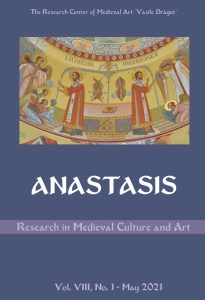Explanation and Chronology of Megalithic Tombs in North-Western Iran (Based on the Excavations of the Scythian Cemetery in Khorram Abad), Meshgin Shahr
Explanation and Chronology of Megalithic Tombs in North-Western Iran (Based on the Excavations of the Scythian Cemetery in Khorram Abad), Meshgin Shahr
Author(s): Ali Navidgabalou, Reza Rezalou, Karim Hajizadeh, Behrouz AfkhamiSubject(s): Archaeology, Cultural history, Ancient World, History of Religion
Published by: Editura ARTES
Keywords: Northwest; MeshginShahr; Khorram Abad’s Cemetery; Scythian tribes; burial;
Summary/Abstract: The ancient cemetery of Khorram Abad is located 7 km away from Meshgin Shahr in Ardabil province. During the excavations, relics of Iron Age I, II and III and also tombs (1500 to 550 BC) have been found. Iron Age I and II tombs are of the type of Megalithic cemetries. The Scythians were a nomadic tribe that spread over a wide geographical area, from the Black Sea in the west to the borders of China. The most important relics of these tribes were their barrows, which can help us understand their political, economic, artistic and worldview. Therefore, for studying tombs, various factors such as the way of distribution of tombs, the shape and form of tombs, burial in tombs, objects and gifts placed in tombs can be very closely related to the culture of people or a region. According to the conducted excavations, this article has pursued three important goals: 1- Typologically, in how many categories can the tombs of this cemetery be classified? 2- What was the relationship between these tombs and the sites of the surrounding settlements, if any, and can the existence of a community with a ruling structure be deduced from the structure and contents of the tombs? 3- What are the analytical comparison and typology of these tombs with their similar types in Iran and abroad? The remains of these barrows have been excavated outside the geographical territory of Iran in the south of Caucasus and around the Black Sea, Russia and Kazakhstan, the most important of which are Pazyryk, Arrajan (Russia) and Kostromskaya. It seems that Khorram Abad’s cemetery had an important religious context used over a wide period of time.
Journal: Anastasis Research in Medieval Culture and Art
- Issue Year: VIII/2021
- Issue No: 1
- Page Range: 143-162
- Page Count: 20
- Language: English

